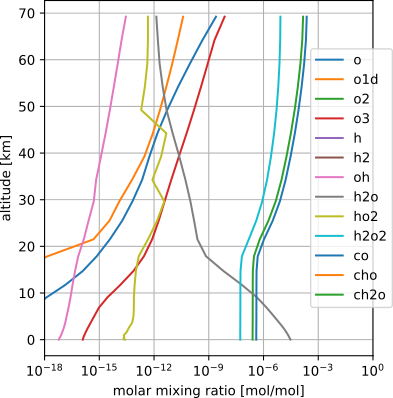Investigating the possibility of H2O2-induced warming on early Mars with a 3D GCM
- 1Laboratoire de Météorologie Dynamique, IPSL, Paris, France
- 2Laboratoire Atmosphère Observations Spatiales, IPSL, Paris, France
- 3Jet Propulsion Laboratory, NASA, Pasadena, CA, USA
Introduction
Liquid water is largely regarded as a sine qua non condition for life as we know it. Geomorphological, mineralogical and sedimentological evidences indicate the presence of perennial liquid water on the surface of Mars in the late Noachian, approximately 3.8 billion years ago (Ga) [1,2], suggesting that it was possibly habitable. Today, the low surface temperature on Mars precludes sustained liquid water. The solar flux was fainter 3.8 Ga than today, leading to a conundrum regarding the conditions that allowed for perennial liquid water on early Mars.
Although likely, a thicker (up to 2 bar) CO2 atmosphere on early Mars falls short of heating up the surface temperature to the melting point of water (273 K) [3]. Thus, other infrared opacity contributors are necessary to further enhance the greenhouse effect. Recently, [4] suggested that such additional greenhouse effect could be due to hydrogen peroxide (H2O2), and calculated that an average of 1 ppm H2O2 in a 2 bar CO2 atmosphere could raise the surface temperature to 273 K. Here we test this hypothesis using a global circulation model (the Generic PCM) and an H-C-O photochemical.
Model
In order to assess the possibility to produce H2O2, we adopted the most favorable conditions by optimizing the water content of the atmosphere, consider an already warm and wet early Mars. This was achieved by using the setup from [5], where warming is due to the collision-induced absorption of CO2 and H2. Notice that the high H2 content assumed in the radiative transfer calculation is unrelated to the chemical model. Within these simulations, we include the H-C-O photochemical network considering 14 species and 52 reactions (including 12 photodissociation reactions). Although not self-consistent, this scenario allows us to study the chemistry on a warm and wet early Mars.
Results
We find that after 10 Martian years of evolution, the average amount of H2O2 starts to plateau. While the upper atmosphere has an H2O2 volume mixing ratio (VMR) above 1 ppm, the well-mixed lower atmosphere has an H2O2 VMR lower than 10-7 (Figure 1). This is likely too low to induce a sufficient greenhouse warming. Because we used the most favorable conditions for H2O2, this result suggests that a more realistic, initially cold and dry early Mars couldn't have been warmed up by the greenhouse effect of H2O2.

Figure 1: Molar mixing ratio of the various species after 10 Martian years.
References
[1] Haberle et al. (2017) The Early Mars Climate System, Cambridge University Press
[2] Rapin et al. (2023) Nature
[3] Forget et al. (2013) Icarus
[4] Ito et al. (2019) ApJL
[5] Turbet et al. (2021) arXiv.org
How to cite: Maurice, M., Forget, F., Luo, Y., Lefèvre, F., Jaziri, Y., Millour, E., Turbet, M., and Braude, A.: Investigating the possibility of H2O2-induced warming on early Mars with a 3D GCM, Europlanet Science Congress 2024, Berlin, Germany, 8–13 Sep 2024, EPSC2024-1051, https://doi.org/10.5194/epsc2024-1051, 2024.